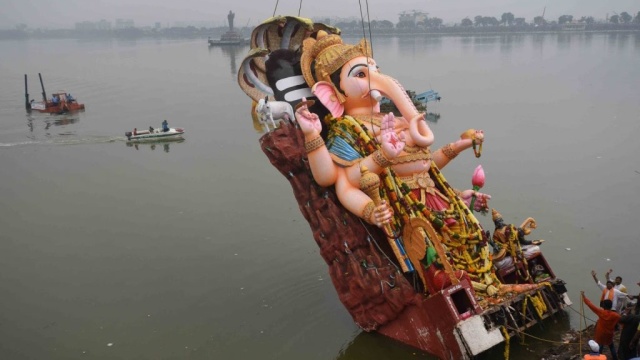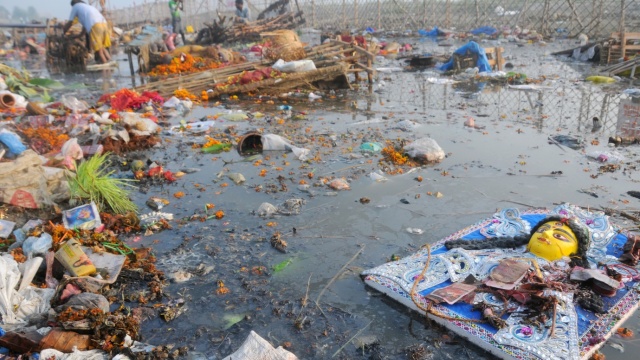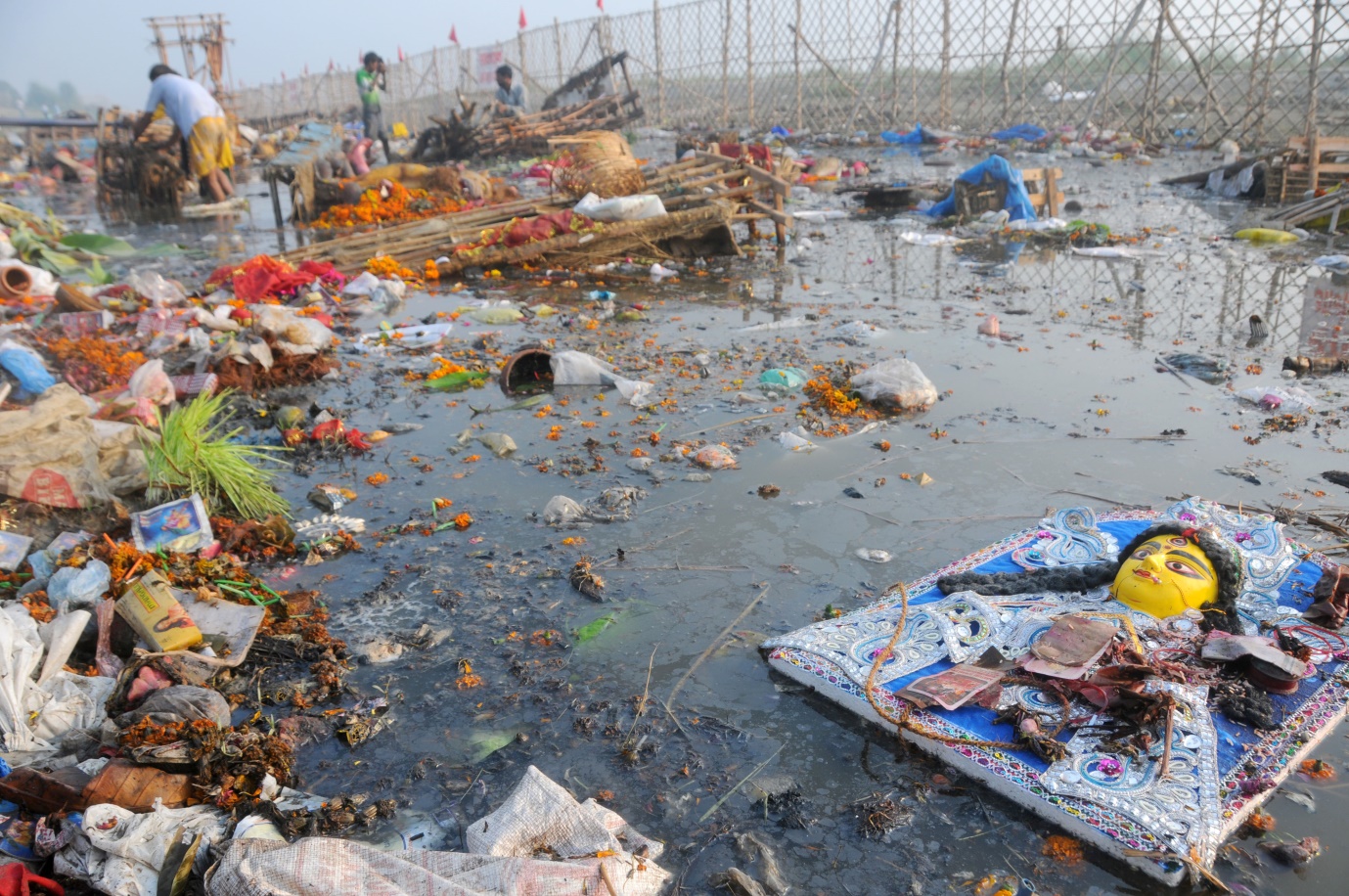Goa and the rest of western India is gearing up to celebrate the much cherished Ganpati festival however these festivities have brought us face to face with questions of ecological degradation and environmental pollution in an unprecedented way. How long are we going to turn a blind eye to this alarming crisis?

Ganesh Chaturthi is one of the most popular festivals in the western part of India and is celebrated with jubilation and gusto. It is a festival that is celebrated across communities and localities inhabited by both the rich and the poor. The festival is celebrated at a large scale and is also gaining much popularity across the whole of India through its projection in popular Bollywood films. Despite its ability to cut across class and locality and involve people of various ranks and economic backgrounds there is something about the festival that is ecologically disturbing and even non-conducive to the creation and maintenance of a sustainable and clean environment.
The part of the festival that has continued to worry many environmentalists and environmentally concerned citizens across all these years is the impact that the immersion of the idol at the end of the festival has on the water bodies.
It can be argued that Ganesh Chaturthi is not a festival that has only been invented in the recent times or that the problems of idol immersion are contemporary and yes it is absolutely true that it has been one of the oldest festivals in India and has been celebrated across generations.
However, what makes the contemporary issue challenging is the fact that in olden times these idols were generally made of clay and today these are made of plaster of Paris. It must be asserted that working with plaster of Paris is more convenient and requires lesser time and effort on the part of the artist. The work that was done with clay however required intricate observation, delicate dealing and a sculptor who was a master in the art. Plaster of Paris can be easily cast in a mould, easily bears a smoother surface compared to clay, is more convenient to paint, is less fragile, is lighter in weight an economically much cheaper when compared to idols made of clay.
Despite all its other market friendly qualities compared to the traditional clay, what makes Plaster of Paris an environmentally unsustainable material to work with is that unlike clay it does not dissolve readily in water and it makes the water hard.
What makes the problem even more challenging is the fact that most of the idols are worked upon and decorated with bright paints and toxic colours and dyes which in turn have a very devastating impact on water and effect marine aquatic life adversely.
It must be made clear that the impact that the immersion of the idol has on the water and the aquatic life is not limited there, when people consume water or sea food the poison goes into their system as well. Therefore, an act of immersion impacts gradually an entire ecosystem that is centred on that single water body.
Many groups and individuals across India are working towards the promotion of clay idols in the country and towards making people aware that even though more viable and cheaper the plaster of Paris idol will only do them more harm in the long run.
At a time when working with clay requires much greater artistic ability, production cost and time artists who are willing to work with clay or had traditionally learnt to do so are also facing a deep crisis.
On the one hand in states like Maharashtra and Goa where in terms of policy Plaster of Paris idols are banned, yet in practice they seem to be rampant. Amidst these situations what many artists today are doing is that after making the idol with Plaster of Paris they are coating it with a layer of clay- so that at least the laypersons would be fooled.
An added factor this year is the GST which has meant that the cost of paints, dyes and other goods required for the completion of the idols have gone up in their prices and thus the aggregate cost per idol has increased. This means that although it has been said that there will be no GST on idols per se, the cost of production per idol has increased which the consumers will be required to pay for.

This has meant that now the preference for pure clay idols will be even lesser than what it could have been.
We can imagine, the kind of repercussions that this would have for the environment in general and the water bodies in particular. If each year our festivities cause so many disturbances to the natural ecosystem then sooner or later we will regret not reinventing our systemic arrangements.
It is also alarming that despite the growing rates of water pollution and degradation we have not been able to strictly regulate the matter and produce only biodegradable, dissolvable materials in times of festivals or otherwise. The sustained efforts of environmentalists and ecologically sensitive citizens is sure to make awareness widespread but without adequate infrastructural and policy support, we cannot move towards a cleaner environment,
We must acknowledge, act and rescue our water bodies. Water after all is synonymous with life itself.
The New Leam has no external source of funding. For retaining its uniqueness, its high quality, its distinctive philosophy we wish to reduce the degree of dependence on corporate funding. We believe that if individuals like you come forward and SUPPORT THIS ENDEAVOR can make the magazine self-reliant in a very innovative way.














